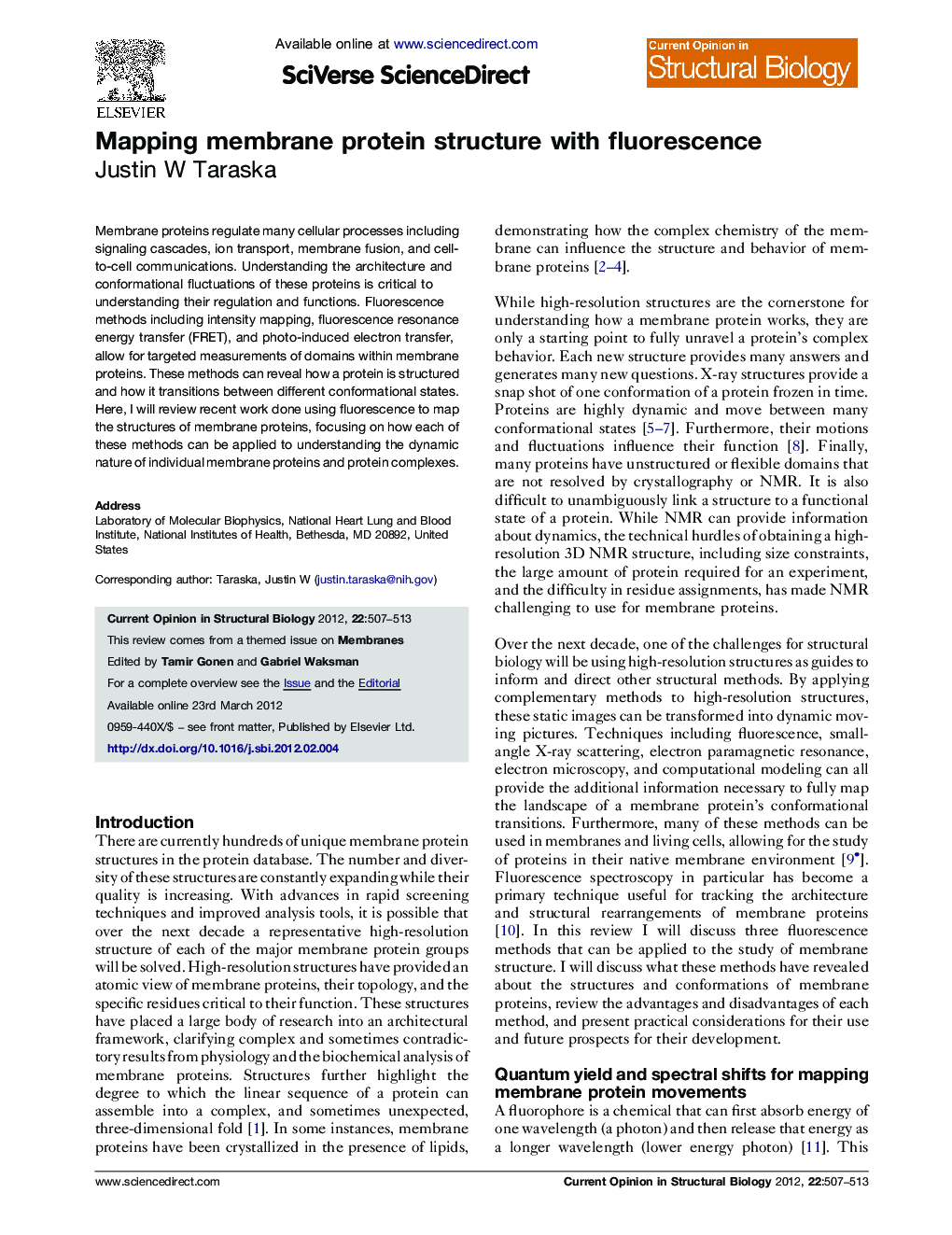| Article ID | Journal | Published Year | Pages | File Type |
|---|---|---|---|---|
| 1979112 | Current Opinion in Structural Biology | 2012 | 7 Pages |
Membrane proteins regulate many cellular processes including signaling cascades, ion transport, membrane fusion, and cell-to-cell communications. Understanding the architecture and conformational fluctuations of these proteins is critical to understanding their regulation and functions. Fluorescence methods including intensity mapping, fluorescence resonance energy transfer (FRET), and photo-induced electron transfer, allow for targeted measurements of domains within membrane proteins. These methods can reveal how a protein is structured and how it transitions between different conformational states. Here, I will review recent work done using fluorescence to map the structures of membrane proteins, focusing on how each of these methods can be applied to understanding the dynamic nature of individual membrane proteins and protein complexes.
► Fluorescence spectroscopy can be used to map the structure of a membrane protein. ► Three primary methods are presented: firstly, intensity measurements, secondly, fluorescence resonance energy transfer, and thirdly, photo-induced electron transfer. ► Fluorescence can provide information about the structure and dynamics of a system.
